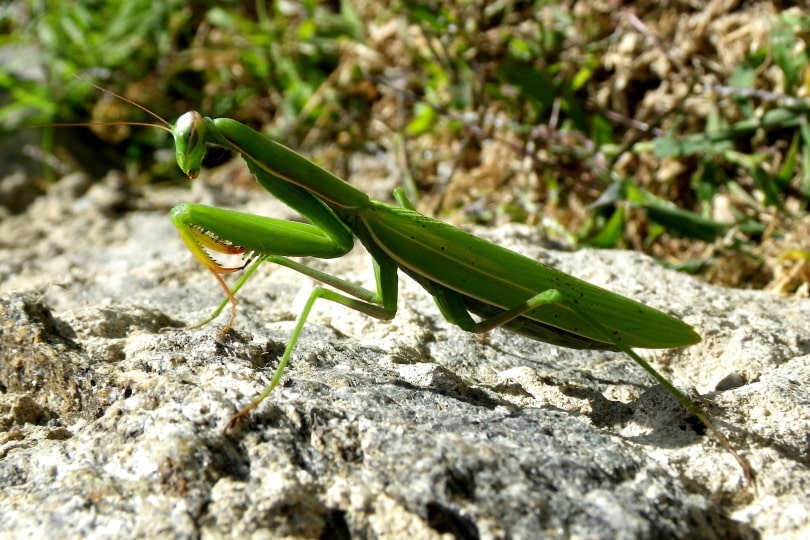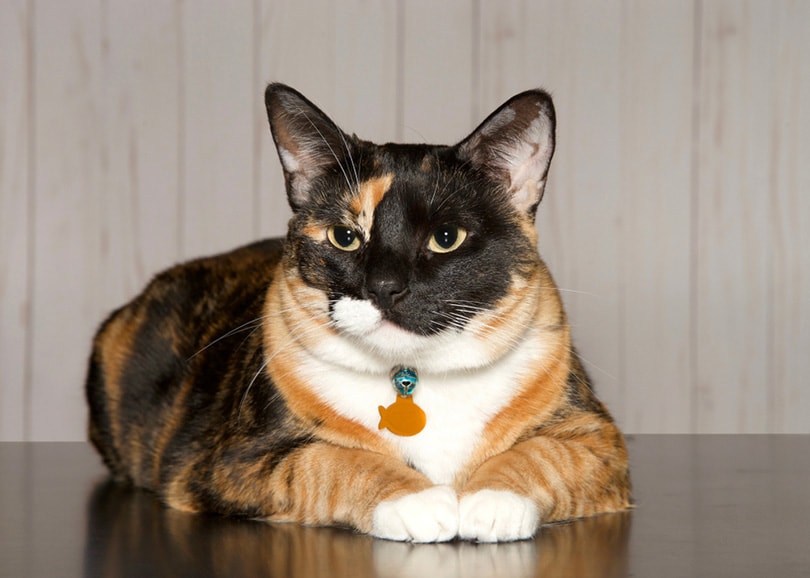Click to Skip Ahead
Praying mantises are an interesting and uncommon pet to own. Those who own them know that they are intelligent and intriguing. Keeping them as pets, though, can become complicated as they need an ideal setup to thrive. Below, we’ll look at the five best praying mantis species to keep as pets and a brief overview of how to care for them.

Why They Are Called Praying Mantis?
The praying mantis was named for their tendency to fold their front legs and bring them together in a “praying” posture. They exhibit this stance when patiently waiting for prey.

The 5 Popular Pet Praying Mantises Species
Different praying mantis species have different needs. Your experience with them will help you decide on which praying mantis species is right for you. Below are common species that are suitable as pets.
1. Chinese Mantis
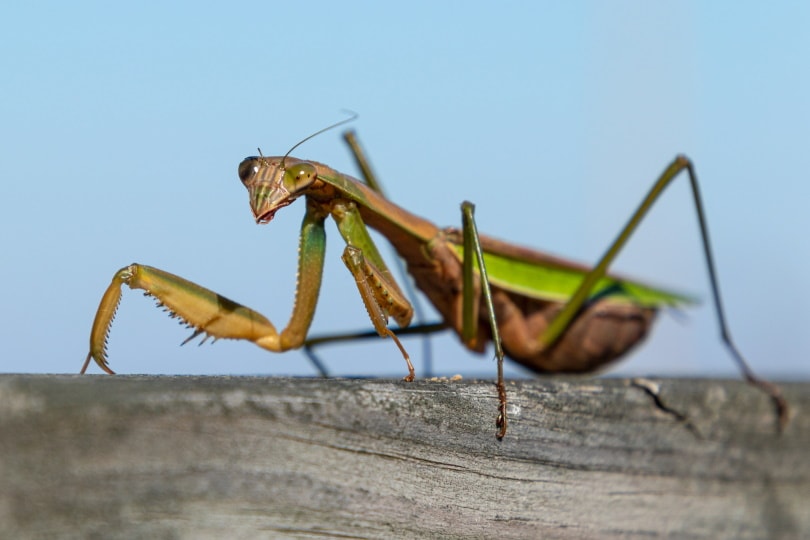
If you are a beginner at mantis keeping, the Chinese mantis is an excellent choice. This mantis is brown and green and is the largest species in North America. It can become friendly enough to perch on your hand and even be hand-fed. The Chinese mantis can survive in normal house temperatures and only requires misting two or three times weekly. It is not a picky eater and will eat moths, spiders, crickets, flies, grasshoppers, and morio worms.
2. African Mantis
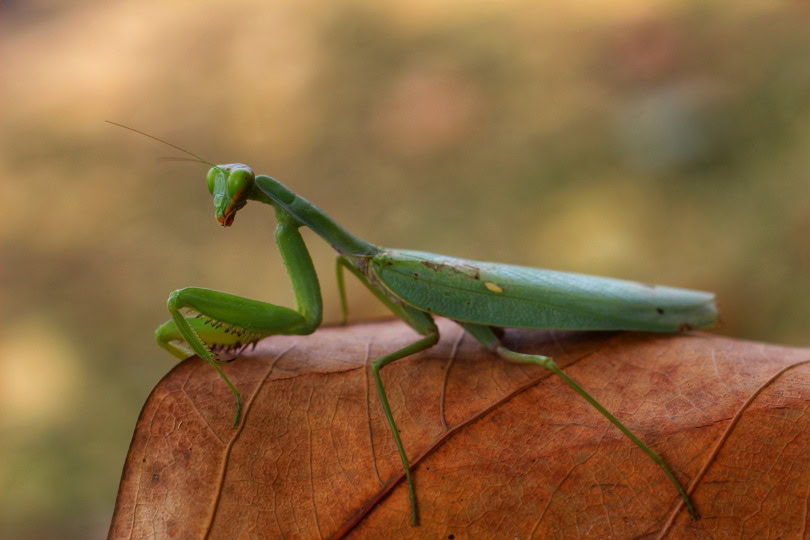
Another mantis great for beginners is the African praying mantis. It is a low-maintenance pet and an active hunter. It will fiercely chase its prey once it is spotted. It is often green and sometimes brown, with the brown mantis often having purple-colored eyes. It is one of the larger species of mantises, measuring 2–3 inches long. As the name suggests, these mantises originated from Africa. They survive in a wide range of temperatures and only require misting about 2 times a week.
3. Ghost Mantis
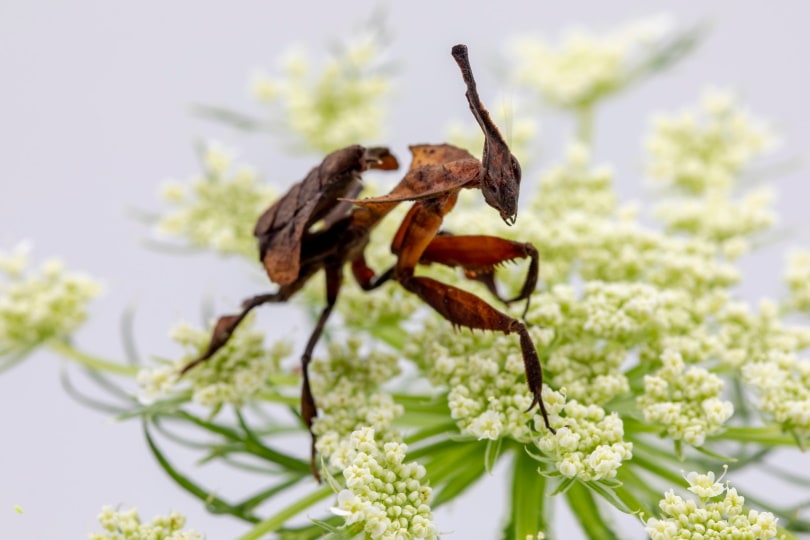
This relatively small species will only grow up to around 2 inches. The Ghost mantis more difficult to care for than the previous species because it requires higher humidity levels and temperatures. This species is an expert in camouflage. Their bodies imitate withered leaves and are usually dark brown, but light brown and green specimens can sometimes be found.
This mantis is a patient hunter and will wait for its prey to approach before quickly attacking. A neat attribute of the ghost mantis is that, unlike other species, it can be kept with other mantises in its enclosure and will not harm each other. They are a mostly peaceful species. Just be sure there is adequate room and food for all the mantises.
4. Orchid Mantis
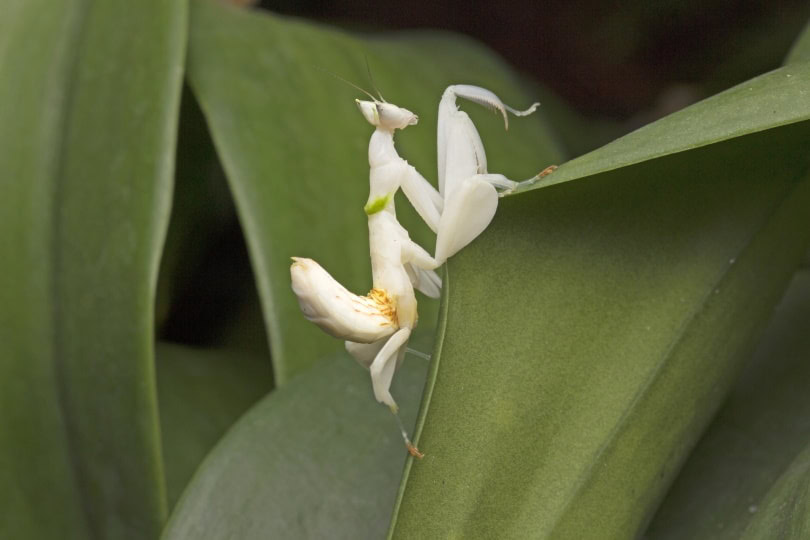
This beautiful mantis mimics the orchid flower and has striking pink and white coloring with special lobes on its legs that resemble flower petals. The Orchid mantis is well-loved due to its unique appearance. It is more delicate and requires more advanced care, including high humidity and a temperature range from 77° to 95° F. Adult Orchid mantises cannot be kept together. The females are much larger than the males, and cannibalism is quite common.
5. Spiny Flower Mantis
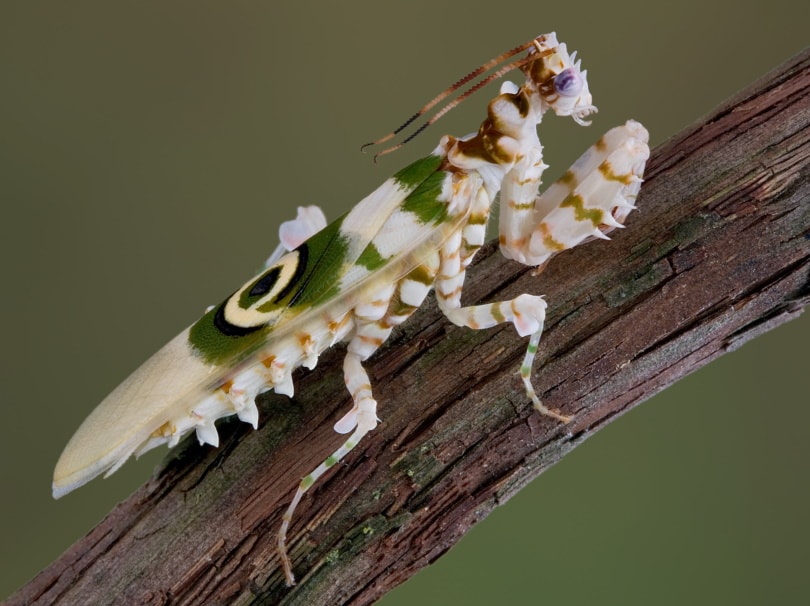
The Spiny flower mantis is white and orange with green stripes all over its body. It also has purple eyes and is common in Africa. The Spiny flower mantis can grow to be 1–2 inches long. When threatened, it uses a dramatic display by raising its forewings to reveal markings meant to look like large eyes to scare away predators.

Caring for Praying Mantises
To take care of your praying mantis, you need a terrarium that is at least three times the height of your praying mantis and two times the length. The setup must have a substrate and plenty of places for the mantis to hide. Some mantises require specific temperatures to be kept and differing levels of humidity. They should be fed every 2 to 3 days.

Conclusion
Keeping praying mantises as pets can be a great learning experience and very rewarding. Their hunting techniques can provide entertainment, and their beautiful markings are unique and can be great fun to photograph. Be sure you have the equipment and have done adequate research before keeping one as a pet. Enjoy your praying mantis journey!
Featured Image Credit: Milchdrink, Pixabay
